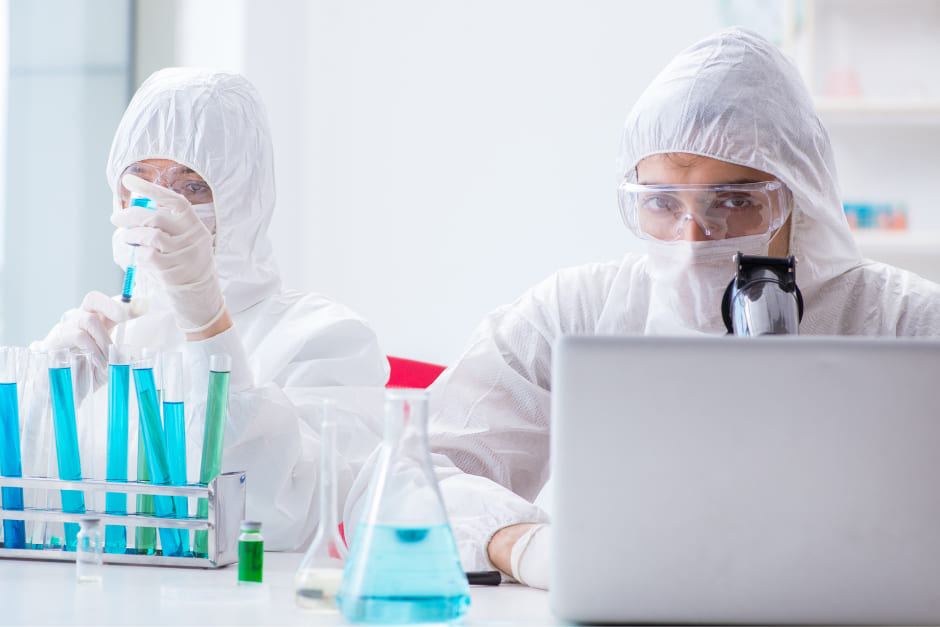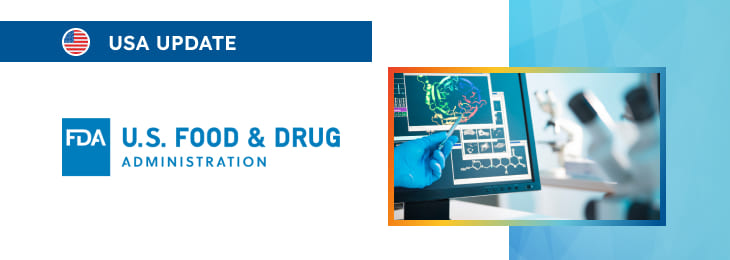The new article provides further clarifications related to gathering additional information.

Table of content
The Food and Drug Administration (FDA or the Agency), the US regulating authority in the sphere of healthcare products, has published a draft guidance document dedicated to chemical analysis for biocompatibility assessment of medical devices. Once finalized, the guidance will provide an overview of the applicable regulatory requirements, as well as additional clarifications and recommendations to be taken into consideration by medical device manufacturers and other parties involved in order to ensure compliance.
At the same time, provisions of the guidance are non-binding in their legal nature, nor are they intended to introduce new rules or impose new obligations. Moreover, the authority explicitly states that an alternative approach could be applied, provided such an approach is in line with the underlying legislation and has been agreed with the authority in advance.
Device Components and Materials
According to the guidance, in order to comprehensively describe a device, detailed information should be provided to highlight potential extractables, which are chemicals that might leach out of the device materials during usage. Such data are crucial for understanding the rationale behind chemical characterization studies.
Recommendations on gathering this information can be referenced in Appendix A of the full document issued by the FDA.

Key Information for Material Characterization
In certain scenarios, such as products made from animal-derived tissues or when there is a modification to a clinical study or marketing application, supplementary details about the manufacturing processes are essential. This can include descriptions of the various manufacturing steps and materials used.
This information is vital as it helps ascertain that any residues from the manufacturing materials are either removed entirely or are present in negligible amounts that do not compromise the device’s biocompatibility. Additionally, during the evaluation of chemical equivalence, a detailed account of any changes made to the device (such as construction materials, manufacturing methodologies, or device geometry) must be provided.
For instance, if a new material formulation or a different material supplier/vendor is involved, a comprehensive list of the materials used previously and currently should be disclosed. This list could include base polymers, plasticizers, stabilizers, surfactants, color additives, and adhesives.
Similarly, changes in the manufacturing process should be accompanied by a list of manufacturing materials (e.g., mold releasing agents or detergents) and the specifics of the process changes (such as steps undertaken to ensure the removal of any manufacturing materials). Such thorough documentation allows for a more accurate determination of chemical equivalence, ensuring that any modifications do not adversely affect the device’s safety and effectiveness.
Test Articles, Control Articles, and Blanks
As explained further by the FDA, the relevance of testing and analytical assessments is significantly enhanced by a clear description of the test and control articles. A detailed comparison between the test articles and the final finished device is also crucial, as it helps establish the relevance of the subsequent characterization results.
If a chemical equivalence study is conducted, a previous version of the device, where biocompatibility has already been confirmed, should serve as the control. Furthermore, the use of a blank control (e.g., solvent-only control) is advisable.
Blank controls help differentiate any analytes not originating from the test article itself, thereby establishing a baseline for analyte measurement. The inclusion of blanks can also be beneficial in chemical equivalence studies to identify non-specific contributions from the test setup.
Relevance of Test and Control Articles
According to the guidance, choosing the correct test and control articles is vitally important for obtaining meaningful results. These articles should accurately reflect the actual device materials and design to avoid introducing variability that might obscure the biocompatibility assessment.
Test Article Processing Prior to Extraction
To replicate real-world scenarios, it is recommended that test articles undergo preparation steps that mimic the clinical preparation of the device prior to extraction. Such preparation may include contact with all associated delivery systems, accessories, and packaging materials, as well as any other preparation or processing steps detailed in the device’s instructions for use.
Considerations for Accurate Preparation
Test article preparation is particularly important for implanted devices, where any deviations from clinical preparation could significantly impact the chemical profile of the extracts. Special care should be taken to avoid unnecessary sample processing that might introduce artifacts or remove relevant chemical constituents.
For instance:
- Drying or Heating Test Articles: These procedures might lead to the loss of volatile compounds, thus skewing the extraction results. Such steps should be avoided unless explicitly stated in the instructions for use.
- Pre-rinsing Test Articles: Pre-rinsing before the extraction study could remove residual chemicals, making it difficult to assess the full chemical profile. This step should only be undertaken if the device’s instructions specifically mention pre-rinsing.
In some cases, minor deviations from the instructions might be warranted. For example, using water instead of saline for rinsing prior to Inductively Coupled Plasma Mass Spectrometry (ICP-MS) analysis could be justified to minimize measurement interference, provided the volumes and times are equivalent.
Handling Modifications and Cutting of Devices
If cutting the device is necessary for sample preparation, caution must be exercised, as cutting can generate particles or expose inner components that are not typically in contact during normal use.
If cutting is performed:
- Analyzing Particulates: Additional details may be required to confirm that the particles generated were a result of the cutting process and that these particles are not representative of what would be released under standard usage conditions.
- Confirming Inner Component Exposure: If components inside the device are exposed during cutting, their composition and potential toxicological impacts should be evaluated to ensure that these inner materials do not present a risk when the device is used as intended.
Overall, careful consideration of the preparation and handling of test articles is essential to ensure that chemical characterization studies accurately reflect the device’s clinical use and potential biocompatibility concerns.
Conclusion
In summary, the present document emphasizes the pivotal role the information gathered from device component materials, test articles, and preparation steps plays in defining the safety profile of a device. Proper documentation and transparent reporting of material changes, manufacturing steps, and any deviations from standard procedures are necessary to ensure that any chemical equivalence or biocompatibility studies are scientifically robust and reliable.
How Can RegDesk Help?
RegDesk is an AI-powered Regulatory Information Management System that provides medical device companies with regulatory intelligence for over 120 markets worldwide. It can help you prepare and publish global applications, manage standards, run change assessments, and obtain real-time alerts on regulatory changes through a centralized platform. Global expansion has never been this simple.

